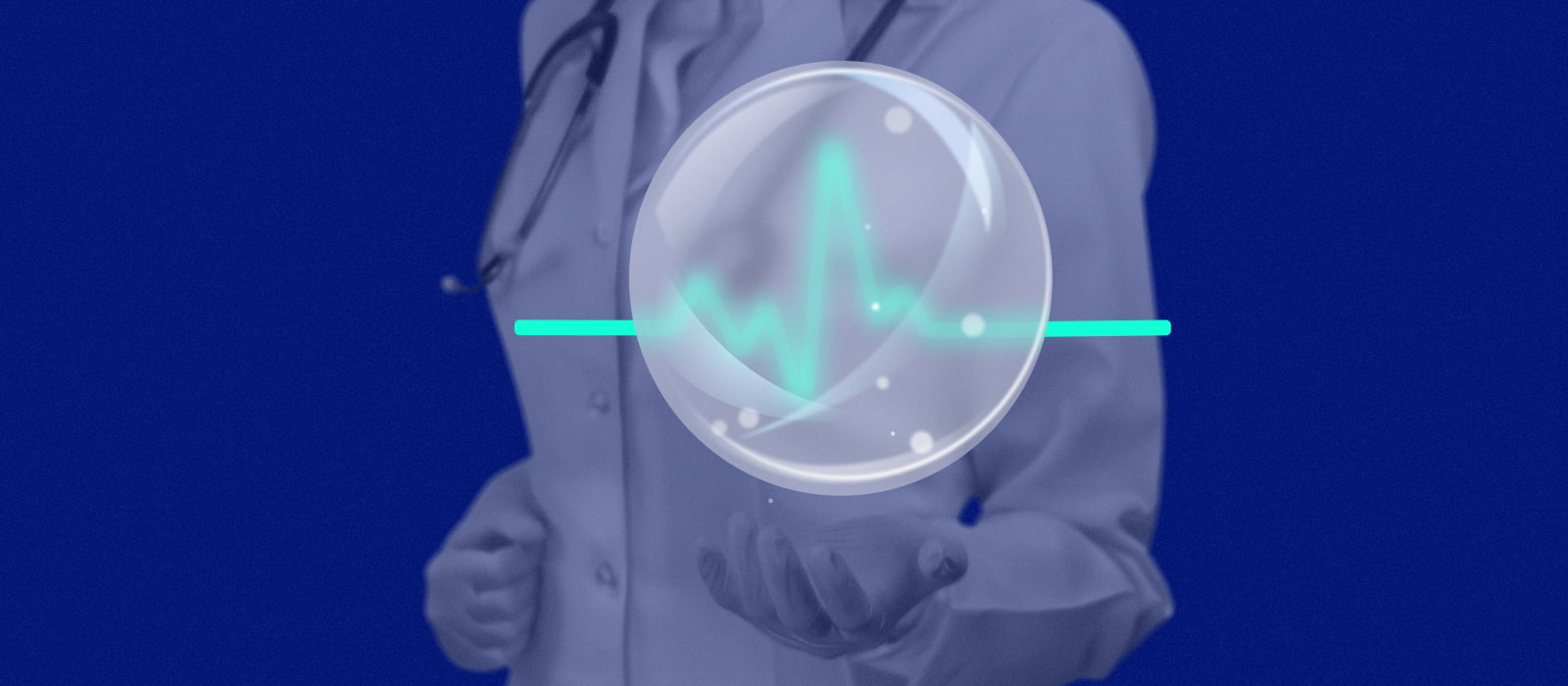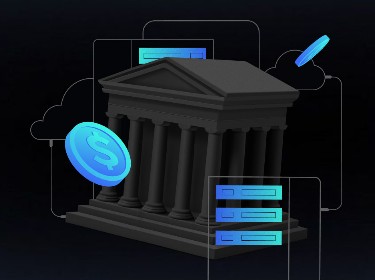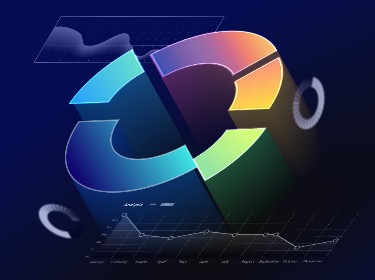The healthcare sector is enthusiastically embracing a range of technologies. Among these, predictive analytics stands out as a vital instrument for boosting efficiency and precision.
No industry can escape technological evolution, and healthcare is no exception.
Healthcare providers around the world are actively incorporating innovative technologies and tools to enhance patient care and streamline operational workflows. One striking indicator of this trend is the projection that the global digital transformation in the healthcare market will reach $253.6 billion by 2033. Central to this expansion is the role of predictive analytics, which significantly impacts patient outcomes and enhances operational effectiveness.
But what makes predictive analytics so significant in healthcare, and how does it benefit both patients and healthcare providers?
In this article, we will explore the fundamentals of predictive analytics in healthcare, highlight its main benefits, and examine ten exemplary use cases that demonstrate its effectiveness
Let’s start!
From consulting to implementation — explore how PixelPlex's data analytics services can enhance your business performance
What is predictive analytics in healthcare?
Predictive analytics in healthcare is the process of using data, statistical algorithms, and machine learning techniques, along with advanced technologies like artificial intelligence solutions and big data analysis, to determine the likelihood of future outcomes based on historical data.
It involves analyzing a vast array of healthcare data, including information such as patient records, treatment histories, demographic information, genomic data, lab test results, as well as resource and staffing data, to assess the risk of specific outcomes and optimize healthcare delivery.
How does predictive analytics in healthcare work?
Data scientists and healthcare professionals utilize algorithms to scrutinize this data for patterns and trends. These patterns, once identified, undergo interpretation to estimate future events, health risks, or outcomes.
The entire process equips healthcare professionals with the capability to make informed decisions, guided by data-driven predictions derived from a comprehensive analysis of complex healthcare datasets.
Discover the power of predictive analytics in healthcare using big data with PixelPlex’s expert consulting and engineering services
What are the main benefits of predictive analytics in healthcare?
![]()
Predictive analytics in healthcare offers several advantages, such as increased cost-effectiveness for healthcare systems, greater operational efficiency, more informed decision-making, a reduction in diagnostic errors, and enhanced patient-centric care.
Let’s take a closer look at each of these benefits of predictive analytics in healthcare.
Increased cost-effectiveness
By anticipating healthcare needs and patient trends, predictive analytics can lead to significant cost savings. This achievement arises from the reduction of unnecessary procedures, optimized use of medical resources, and more efficient patient care pathways, which ultimately provide financial benefits to the entire healthcare system.
Greater operational efficiency
Predicting trends in patient flow and health outcomes helps healthcare organizations enhance their operational planning. This results in smoother operations, reduced wait times for patients, and a better allocation of staff and resources.
More informed decision-making
Providing healthcare professionals with actionable insights from predictive analytics in healthcare using big data supports more informed and data-based decision-making. This approach ensures that medical decisions, grounded in solid data analysis, lead to better health outcomes and more efficient healthcare delivery.
Reduction in diagnostic errors
The implementation of predictive analytics in healthcare helps reduce diagnostic errors and the likelihood of misdiagnosis or delayed diagnosis. It also ensures timely and accurate interventions and contributes to a more precise and effective patient care system.
Enhanced patient-centric care
Predictive analytics in healthcare directly impacts several factors that contribute to patient satisfaction. These encompass improved diagnostic accuracy and tailored treatment plans that lead to better health outcomes, along with efficient resource management that also contributes to reduced wait times.
On top of this, it fosters a more patient-centric healthcare environment and makes individuals feel that healthcare providers understand and address their specific needs and preferences.
Check out how the PixelPlex team delivered this AI-powered retina disease diagnosis tool
Top 10 examples of predictive analytics in healthcare use cases
![]()
If you are seeking insight on how to use predictive analytics in healthcare, consider exploring our top 10 examples of its use cases in the healthcare sector.
1. Early disease detection and management
Predictive analytics in healthcare forecasts complications and exacerbations in chronic conditions and empowers healthcare providers to modify treatments in advance, thereby reducing hospital readmissions and improving long-term health outcomes.
Beyond this, in the realm of early disease detection, predictive analytics scrutinizes patient data, including lab results and health histories, to identify initial signs of illness and allow for more effective and, chiefly, timely treatment.
2. Customized patient care
Through the precise analysis of each patient’s data, healthcare providers gain a deeper understanding of individual needs to craft treatment plans that specifically cater to each patient.
This level of personalization not only enhances the effectiveness of treatments but also significantly boosts patient satisfaction. Plus, noteworthy is that patients often show a higher level of compliance with medical advice when the care they receive aligns well with their unique conditions and preferences.
3. Resource and staffing optimization
Another use case of predictive analytics in healthcare involves optimizing resources and staffing. By accurately forecasting patient admissions, hospitals can precisely allocate resources like beds and medical staff to where they are most needed. This minimizes waste, reduces costs, and ensures optimal utilization of resources such as medical equipment and personnel.
Predictive models are also important in scheduling elective surgeries and planning for seasonal fluctuations in patient load, as this enables healthcare providers to enhance overall hospital efficiency and bolster patient care quality.
As well as this, predictive analytics in healthcare aids in managing staff workloads more effectively, which helps reduce burnout among healthcare professionals, thereby maintaining a high standard of care and ensuring patient satisfaction.
4. Drug development and clinical trials
In drug development and clinical trials, predictive analytics assists in rapidly identifying promising drug candidates and therapeutic targets by analyzing molecular interactions and pharmacological profiles. This accelerates the drug discovery process and streamlines both the speed and cost-effectiveness of new drug development.
Furthermore, in clinical trial design, predictive analytics guides the selection of suitable participants based on comprehensive patient profiles, genetic markers, and health histories. This approach leads to a diverse and well-informed participant group that enhances the trial’s reliability and applicability.
Take a look at how our developers created this custom scheduling platform for health centers and their clients
5. Healthcare risk management
Healthcare risk management via predictive analytics involves identifying patients at a higher risk for specific conditions. Advanced algorithms analyze a multitude of patient data, including genetic predispositions, lifestyle factors, and medical histories to enable healthcare providers to concentrate on customized preventive measures tailored to each patient’s unique risk profile. As a result, there is a significant reduction in chronic diseases and other serious health issues.
Crucially, these predictive insights enable early interventions that encompass personalized care plans and targeted actions based on individual risk factors. Plus, they contribute to lowering long-term healthcare costs by preventing the progression of diseases to more severe stages, thus reducing the need for costly treatments and hospitalizations.
6. Predictive maintenance of medical equipment
Predictive maintenance of medical equipment entails forecasting potential failures or maintenance needs of medical devices by analyzing equipment performance metrics, usage patterns, and historical maintenance records.
It further empowers healthcare facilities to achieve additional goals, including predicting equipment malfunctions before they arise, scheduling maintenance at opportune moments, reducing equipment downtime, and preventing unforeseen breakdowns.
Thus, with well-maintained equipment less likely to fail during critical procedures, the risk of interruptions in patient treatment is significantly reduced.
7. Surgical and treatment planning
For surgical planning, predictive analytics delves into historical surgery data, where it considers factors like patient characteristics, surgical techniques, and post-operative care protocols to predict the results of upcoming surgical procedures. This empowers surgeons and patients to make well-informed decisions about treatment options, which in turn leads to more successful surgeries.
As well as this, predictive models extend their capabilities to forecast how individual patients will respond to various treatments. By taking into account factors such as genetics, health history, and treatment effectiveness data, these models ensure the development of highly personalized and effective treatment plans. Such a high level of customization significantly improves patient care and enhances overall treatment outcomes.
8. Preventive health strategies enhancement
Another notable application of predictive analytics in healthcare is the formulation of more efficient preventive health strategies.
Through the identification of patterns and risk factors linked to different health conditions, healthcare providers can craft focused prevention programs aimed at reducing disease occurrences and fostering healthier lifestyles in populations. This involves the utilization of advanced data analytics, including machine learning algorithms, to analyze large-scale health data sets and derive actionable insights for targeted prevention efforts.
See how PixelPlex delivered this sophisticated mobile application for managing health data and providing incentives to improve health outcomes
9. Genetic risk assessment
Predictive analytics can be used for a comprehensive analysis of genetic data, including but not limited to gene mutations and family history.
Predictive models employ advanced data analysis techniques to scrutinize these intricate datasets and spot specific genetic markers linked to elevated disease risks, such as cancer, cardiovascular disorders, or genetic syndromes.
Detecting these risks enables healthcare providers to institute early monitoring protocols and targeted preventive measures. These measures may encompass frequent screenings, personalized lifestyle modifications, or preemptive treatments based on an individual’s genetic predisposition.
10. Patient flow optimization
Hospitals are increasingly embracing predictive analytics to optimize patient flow and enhance care delivery efficiency. This involves the in-depth analysis of historical data trends from previous patient admissions and service utilization patterns.
Using sophisticated data analysis techniques, hospitals can accurately predict times of high patient influx and dynamically adjust their staffing levels and resource allocation in response. Such predictive capability allows hospitals to eliminate delays in patient care and significantly reduce waiting times.
As a result, the improved management of patient flows ensures the optimal utilization of hospital resources such as beds and medical personnel and elevates the overall patient experience.
Not only predictive analytics: explore how our machine learning consulting services empower healthcare businesses to gain a competitive edge
Potential challenges to consider before applying predictive analytics in healthcare
Before implementing predictive analytics in healthcare, it is important to recognize and proactively address a range of challenges spanning technical, ethical, and practical dimensions.
Now, let’s explore some of the most common ones.
Data quality and availability
Predictive models require large, diverse datasets to ensure accuracy and generalizability. However, healthcare data often suffers from inconsistencies, incompleteness, and bias. This can lead to inaccurate predictions, which might adversely affect patient care.
To prevent this, healthcare institutions should prioritize data quality initiatives, invest in robust data collection and management systems, and implement rigorous data cleansing and preprocessing techniques.
Privacy and security concerns
The use of patient data in predictive analytics raises significant privacy concerns. Thus, ensuring the security of sensitive health information and compliance with regulations like HIPAA (Health Insurance Portability and Accountability Act) is crucial since any breach of privacy can have severe repercussions, both legally and in terms of patient trust.
Resistance to change
The usage of predictive analytics in healthcare can face resistance from practitioners accustomed to traditional methods, which can slow down its implementation and acceptance.
To overcome this resistance, healthcare organizations should invest in robust training programs and effective change management strategies. By educating practitioners about the benefits and utility of predictive analytics and involving them in decision-making, organizations can cultivate a culture of acceptance and facilitate a smoother implementation process.
Complexity and resource intensity
Developing and implementing predictive analytics models demands significant resources, including computational power and specialized expertise in data science and healthcare. This cost and technical complexity may pose challenges for smaller healthcare providers.
Therefore, conducting a cost-revenue analysis can be a wise approach for healthcare providers to evaluate the feasibility and potential return on investment associated with the development and implementation of predictive analytics models.
Discover our comprehensive healthcare software development services, encompassing every stage from consulting to seamless integration
What does the future of predictive analytics in healthcare look like?
The future of predictive analytics in healthcare is centered on advancing personalized care and optimizing healthcare delivery. This application will result in improved disease prediction, tailored treatment plans, and enhanced resource management.
For healthcare organizations seeking to harness analytics advancements, PixelPlex offers comprehensive predictive analytics services and solutions.
Our expertise includes consulting to identify optimal strategies, custom software development tailored to healthcare needs, and specialized services for modernizing predictive analytics systems. We also provide robust integration and maintenance to ensure seamless operation and reliability.
Contact us now and explore how PixelPlex can enhance your analytics.




